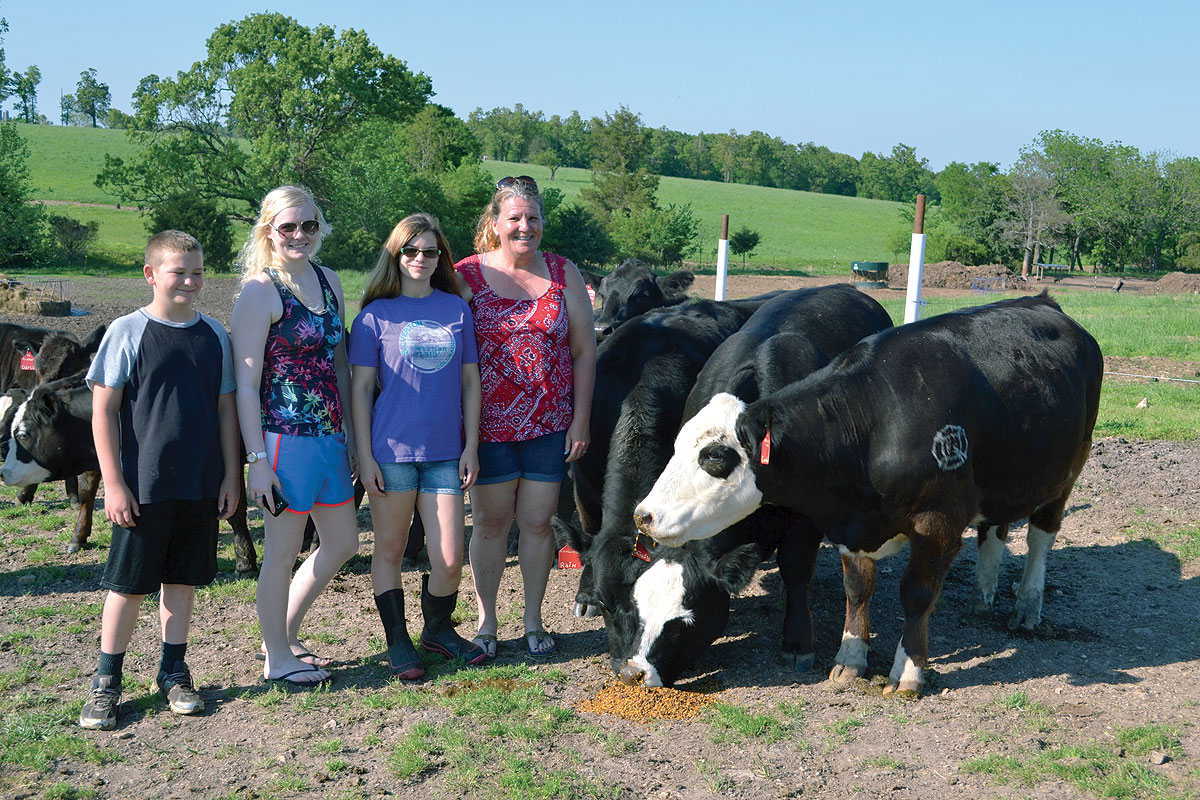Kris and Glenn Callison moved from California to rural Lawrence County, outside Mount Vernon, Mo., upon Glenn’s medical retirement as a state fire fighter and chimney sweep in California more than a decade ago.
“Many of Glenn’s family members already lived in this area, working with dairy and beef cattle,” Kris shared recently at her home, surrounded by their children, Rebekah (20), Rachel (15) and Seth (12).
“We knew we wanted to raise cattle and attended the Ozark Empire Fair and Farmfest in Springfield, Mo. We looked at three different breeds, but it was the people who raised Simmentals who really reached out to us,” she recalled. “They were so friendly and have an outstanding program.”
Today, Kris is an agriculture teacher with Ozark Technical College and Glenn is an EMT in Carthage, Mo. They raise registered Simmental and SimAngus on their 45-acre Fire Sweep Ranch.
“We usually run about 20 cows but at the moment, we have 30 since we didn’t have a state spring sale. That means we will have a big fall state sale in November. We practice managed intensive grazing, moving our cows every 24 to 36 hours, which is why we can keep so many on such a small acreage right now.”
Kris is an advisor for the junior division of the Missouri Simmental Association and her children are also involved with agriculture.
“Rebekah has been to AI school and works for Select Sires breeding cows. Rachel took over for her when she left to go to college, and now Rachel does 90 percent of our AI work. I pick up the rest when needed. All four of us AI and Seth will follow when he is old enough.”
Rebekah was a trustee with the American Junior Simmental Association, representing the breed at their association headquarters’ meetings in Bozeman, Mont., where the 15 members of the board met.
“It was mind-blowing to see the big ranches out there in Montana and to see the way, farmers in each area adapt to their environment in the way they raise their livestock,” Rebekah said. “I like to say, we show breeding cattle. We don’t breed show cattle. A number of show heifers have reproductive problems down the road and our goal is longevity.”
Before moving to Missouri, Kris was a high school agriculture teacher for seven years and also worked in agricultural research so the genetics are very important to their operation. “The research work taught me to stick with the tried and true. We don’t sell show heifers. We sell bred heifers or cow-calf pairs. That way it is obvious they can reproduce and go home and have more. We’re pretty picky about our bulls, too, but I’ve had no problem selling ours.”
Perhaps, most important to Kris, however, is the learning experience that has been available to her children and others through both her teaching career and their family’s life on the farm.
“We don’t miss the annual regional and national junior cattle shows and contests.
“They’ve also participated locally in something we call Carcass on the Rail once the show is over. They learn about feeding, castration, genetics, and things you wouldn’t see in the show ring. The end result is the steers they raised will be evaluated on the rail by a USDA inspector. They get to see all the carcasses that participated and how they turned out. We also helped with a freeze brand clinic here in Lawrence County, Mo., a few years ago in which we expected about 15 people; over 200 showed up. It was busy but great as we demonstrated how to brand calves when theft was a big problem around here.”
While Kris isn’t sure if her children will continue raising cattle in the future, but she is sure they will continue to be an active voice for the industry.
“This is how we educate the next generation of beef producers,” Kris said. “Right now, Rachel is interested in being a flight EMT, but whatever they do, I feel like mine have learned a lot. I know they will continue to be educated consumers of beef products.”








